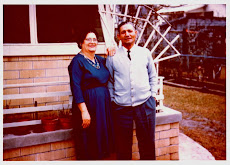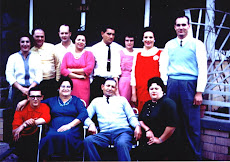
In the mid-1970s, the City of Biloxi embraced its multi-ethnic heritage and began marketing and celebrating the city’s unique culture and character through events like “The Ethnic Trees of Christmas” in the newly restored Tullis-Toleando Manor.
The celebration included British, Italian, French, Slavic and, in later years, Vietnamese and African-American trees sponsored and decorated by the city’s social and cultural groups, including the Slavonian Ladies’ Auxiliary and the Fleur de Lis Society .
My mother and aunts were members of the Slavonian Ladies’ Auxiliary’s tree committee. They were excited, but stumped. What exactly did a Slavic Christmas tree look like? As second generation Americans, their concept of the holiday was largely shaped by this country’s customs.
Somehow an aluminum tree with blue glass bulbs from Woolworth’s, like the one in my grandparents’ living room, just didn’t seem appropriate for the Tullis Manor’s stately antebellum setting. Clearly some library research was in order.
The committee found references to a “tree for the birds” popular in many snowy Slavic countries. Fruit and popcorn were cheap and easy. Still the tree lacked something. It just didn’t reflect the culture these ladies had grown up with.
In a truly inspired moment, someone hung some donut holes, which resemble the popular holiday pastry pusharates, on the tree. Someone else baked dough ornaments shaped like hrstule (bowties) another popular holiday pastry. They decorated a mantle next to the tree with South Mississippi greenery, St. Nicholas strings and statues of Croatia’s holiday saints, St. Nick and St. Lucy, from the religious shop downtown.
Actually, the shop didn’t have a St. Nicholas figurine in stock. They did have St. Patrick. A few dabs of paint turned his green robes red and his shamrock into a sprig of holly. And voila,St. Nicholas.
St. Lucy resembled a Disney princess with a flowing pink gown and abundant golden tresses. Her big blue eyes -- gouged out by her pagan torturers-- peeked up demurely from a platter she held out as if offering tea cakes.
In the end the Slavic tree wound up being a little Old Country, a little New Country – just like the Slavic residents of Point Cadet.
The ethnic trees remained a Tullis-Toleando Manor staple right up until Hurricane Katrina. The storm’s surge deposited Grand Casino’s barge right on top of the beautiful old home destroying it forever.
The celebration included British, Italian, French, Slavic and, in later years, Vietnamese and African-American trees sponsored and decorated by the city’s social and cultural groups, including the Slavonian Ladies’ Auxiliary and the Fleur de Lis Society .
My mother and aunts were members of the Slavonian Ladies’ Auxiliary’s tree committee. They were excited, but stumped. What exactly did a Slavic Christmas tree look like? As second generation Americans, their concept of the holiday was largely shaped by this country’s customs.
Somehow an aluminum tree with blue glass bulbs from Woolworth’s, like the one in my grandparents’ living room, just didn’t seem appropriate for the Tullis Manor’s stately antebellum setting. Clearly some library research was in order.
The committee found references to a “tree for the birds” popular in many snowy Slavic countries. Fruit and popcorn were cheap and easy. Still the tree lacked something. It just didn’t reflect the culture these ladies had grown up with.
In a truly inspired moment, someone hung some donut holes, which resemble the popular holiday pastry pusharates, on the tree. Someone else baked dough ornaments shaped like hrstule (bowties) another popular holiday pastry. They decorated a mantle next to the tree with South Mississippi greenery, St. Nicholas strings and statues of Croatia’s holiday saints, St. Nick and St. Lucy, from the religious shop downtown.
Actually, the shop didn’t have a St. Nicholas figurine in stock. They did have St. Patrick. A few dabs of paint turned his green robes red and his shamrock into a sprig of holly. And voila,St. Nicholas.
St. Lucy resembled a Disney princess with a flowing pink gown and abundant golden tresses. Her big blue eyes -- gouged out by her pagan torturers-- peeked up demurely from a platter she held out as if offering tea cakes.
In the end the Slavic tree wound up being a little Old Country, a little New Country – just like the Slavic residents of Point Cadet.
The ethnic trees remained a Tullis-Toleando Manor staple right up until Hurricane Katrina. The storm’s surge deposited Grand Casino’s barge right on top of the beautiful old home destroying it forever.


